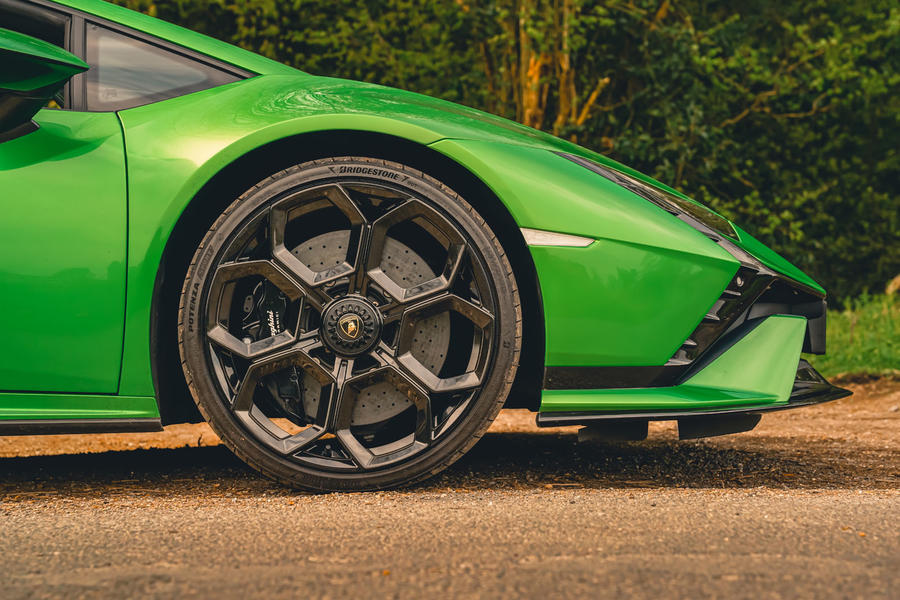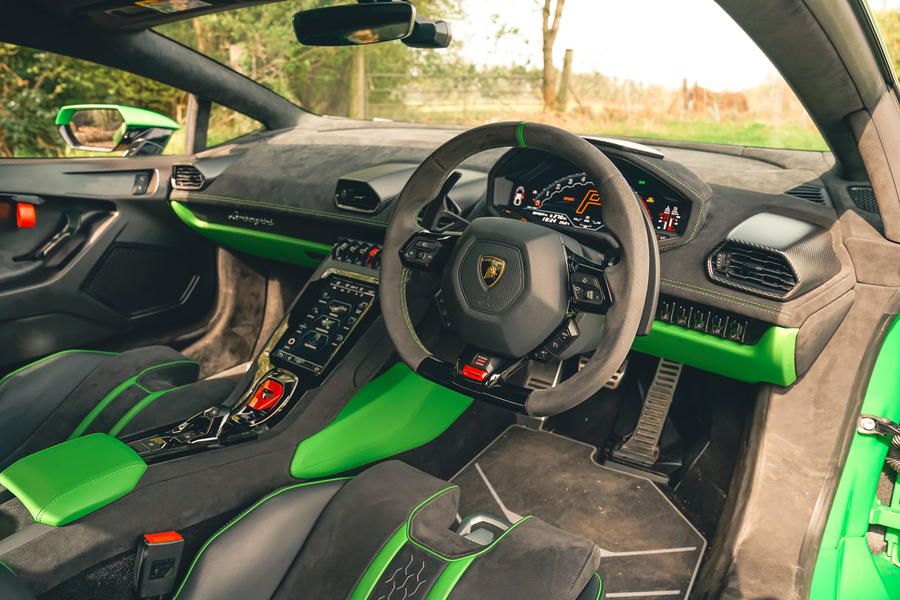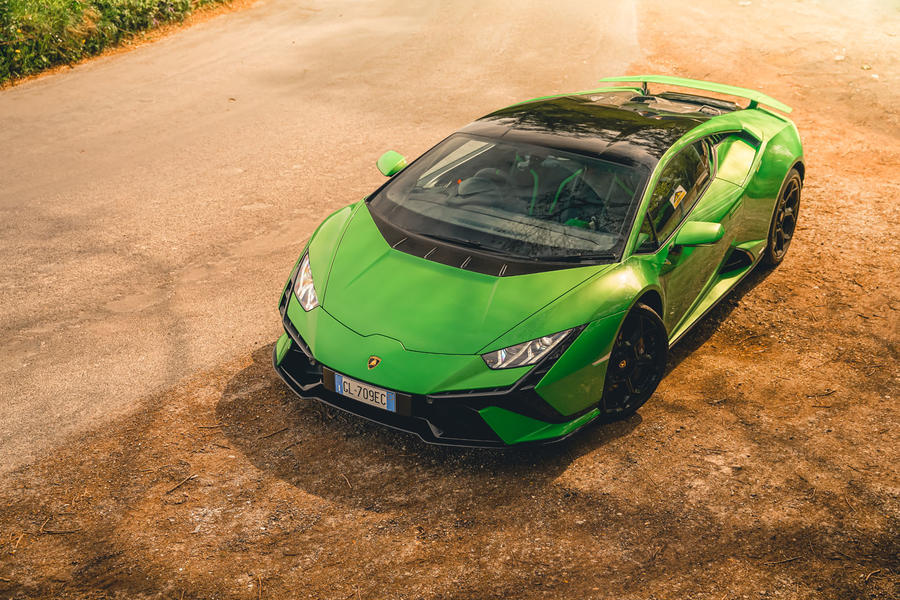Goldilocks model is meant to show the Huracán at its best. How does it fare in the UK?
How the hell do you deny something as exquisitely barbaric as Lamborghini’s V10?
Unless you suffer from acute musical anhedonia, it’s not possible. The sound this naturally aspirated 5.2-litre motor makes is too rich, resonant, gut-wringing.
After a while in its company and numerous forays to 8500rpm under your belt (sometimes you ambush the redline, flaring up to it; but sometimes you linger for the final stretch, revelling in the aural chaos), you start to wonder how many get-out-of-jail-free cards this unit has handed out over the years.
Not every Huracán, or the Gallardo before it, has been a dynamic delight. In the old days the cars were flat-footed, and even the current Huracán Evo AWD feels synthetic in direction changes. Yet each and every one of them has had that undeniable mid-mounted charm dispenser to fall back on.

What makes the Huracán Tecnica interesting is that, of all the V10 ‘baby Lambos’ launched since the Gallardo made its debut in 2003, this is the one that should be least reliant on its phenomenal engine to win hearts, minds and wallets. And therefore also the least afraid of rivals at Maranello and Weissach.
A £204k run-out special before the Huracán’s V8-hybrid replacement arrives later this year, the Tecnica is a stepping stone between the fine, fluid, road-leaning Huracán Evo RWD and the Huracán STO, which is the nightmarish track-day flyweight of the range and a truly awesome supercar in just the right circumstances. An STO’s precision with the Evo RWD’s malleability ought to be a winning combination. And when we drove a Tecnica on track at Ricardo Tormo in Valencia last year, and on the surrounding glass-smooth roads, it was just that.
Here in the UK, the environment is more challenging. However, the Tecnica still manages to nail some considerable highs. At 1379kg, its dry weight is just 10kg less than that of the Evo RWD but rear steering and tighter body control mean it changes direction in notably crisper fashion, if not with quite the unrestrained hunger of the 1339kg STO. It has accuracy in abundance but isn’t remotely matter-of-fact about it.

Communicative, delicate steering loads up neatly on the way into bends, and once you’ve established some confidence, you can ever so slightly light up the rear axle on exit, so long as you’ve got the ESC off or in its more relaxed Sport setting. We’re not talking Ferrari 296 GTB levels of indulgence here, but the Tecnica is an extremely polished performer on technical roads, to the extent that you might just forget about the yowling, 631bhp V10 strapped to your back.
When it comes to details, the only major frustration is the pedal for the carbon-ceramic brakes. It’s overly assisted, biting too hard and high, and the ABS intervention is nervously keen, though furrowed B-roads and only lukewarm, nearsemi-slick Bridgestones don’t help.
Is this enough to prevent the Tecnica from being considered the apogee of the Huracán lineage? No, it isn’t. But something else is.

I don’t know why Lambo refuses to give the Huracán an Ego mode like the Aventador has, where you can mix and match settings for chassis and powertrain. Whatever the reason, the Tecnica suffers more than other Huracáns do for the absence of such a mode.
Only in softest Strada are its suspension rates palatable in the UK, yet Strada also removes the claws from the powertrain. They return to glorious effect in Sport mode, but then the damping is so unforgiving that to get enough load through the chassis and sand down the road surface, you’re courting outrageous speeds.
So the Tecnica is brilliant, but it also frustrates. Driven ruthlessly, it’s an exemplar of the considerable steps its maker has taken in recent years and is a true rival to cars from McLaren, Ferrari and Porsche. But V10 or not, you would simply have more fun, more of the time in a 296 GTB, and that really is undeniable.

Source: Autocar
